An exclusive look inside Patek Philippe’s new HQ
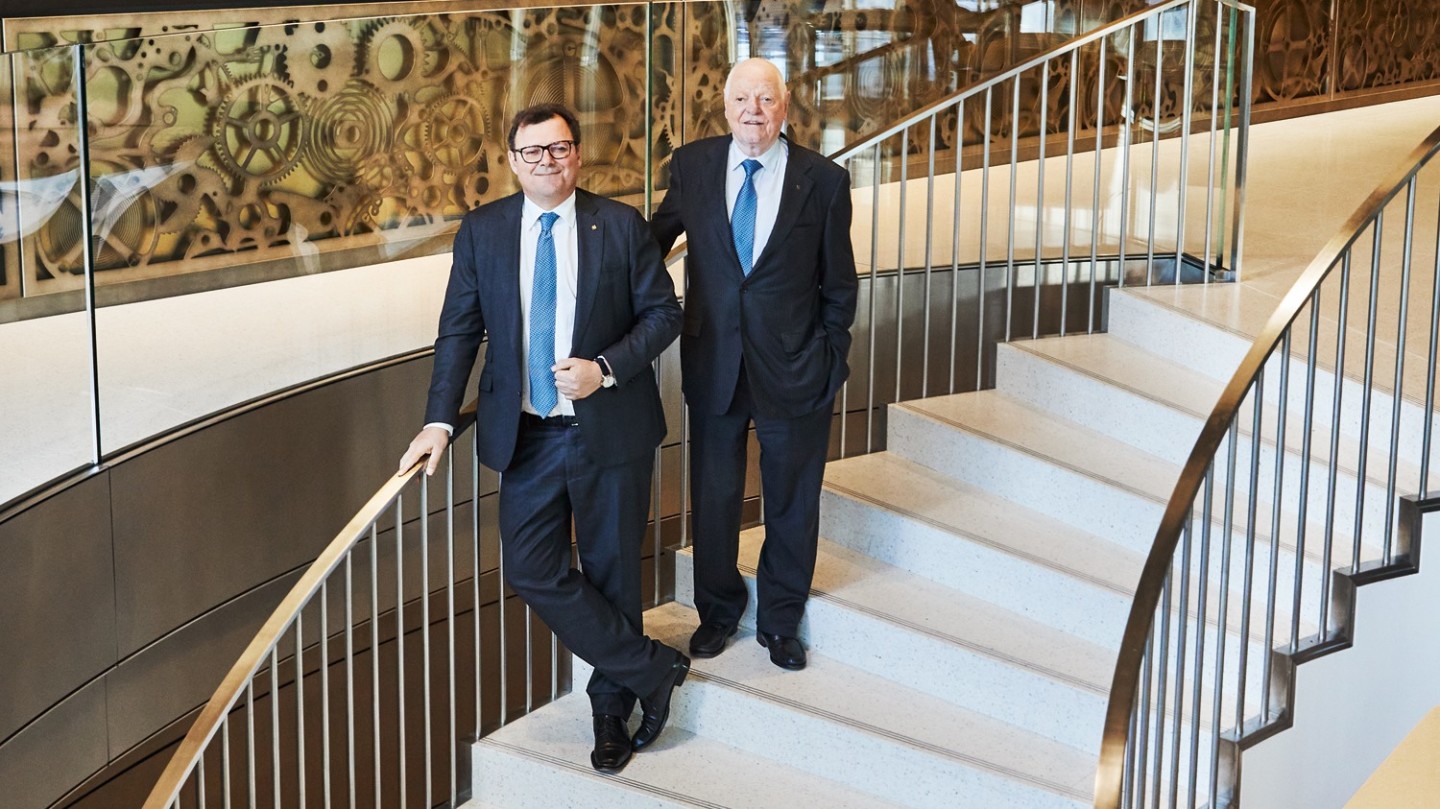
Roula Khalaf, Editor of the FT, selects her favourite stories in this weekly newsletter.
Five years ago Thierry Stern, president of Patek Philippe, and I were standing on the edge of a hole in the ground the size of a large sports stadium where his staff car park used to be. Thierry is an outgoing, easy-going individual. In his dark suit, white shirt and dark glasses, lighting a cigarette, he could have been auditioning for a remake of The Blues Brothers, but that morning he looked unusually pensive. Then again, I suppose that looking at a hole in the ground that will wind up costing you about £490m tends to concentrate the mind.
Today the hole has gone. In its place is a bright building of gleaming glass and polished concrete rising six storeys into the air and burrowing another four underground. Under a cloudless Geneva sky, its art deco-reminiscent lines stretching off into the distance, it recalls an ocean liner… only much bigger. You could fit seven Airbus A380s into it and its construction used enough metal to build two Eiffel Towers.
For watch lovers, Patek Philippe ignites the sort of passion that others find in football or religion. It holds the record price for both wrist and pocket watches, $31m and $24.4m respectively, and it is such a closely scrutinised watch brand that a millimetre more or less on the diameter of a watch, or a change in the shape of a push-piece, is enough to generate a torrent of debate and opinion. If a millimetre and component change can do that, then I lack the mathematical capacity to extrapolate the effect of a new manufacturing facility the size of 15 football pitches.

Once through the doors, the entrance lobby is what you would get if Four Seasons did first-class lounges: booths, banquettes, statement light fittings, sweeping spiral stairs and airport-like entry gates. Upstairs, the light-flooded, prairie-like production floors, each zone separated by huge, hangar-sized sliding doors, bustle with activity. Should this building ever welcome visitors, a few airport-style buggies might not be a bad idea.
Ever since the announcement of this new building in 2014, Patek Kremlinologists have been working overtime speculating what it “means” and whether there will be a production glut. Patek Philippe is a long-term balancing act: as the upper end of the industry becomes increasingly polarised between powerful brands and niche specialist producers, it must remain big enough to stay commercially relevant and be able to continue to invest, while maintaining its reputation for quality and exclusivity.
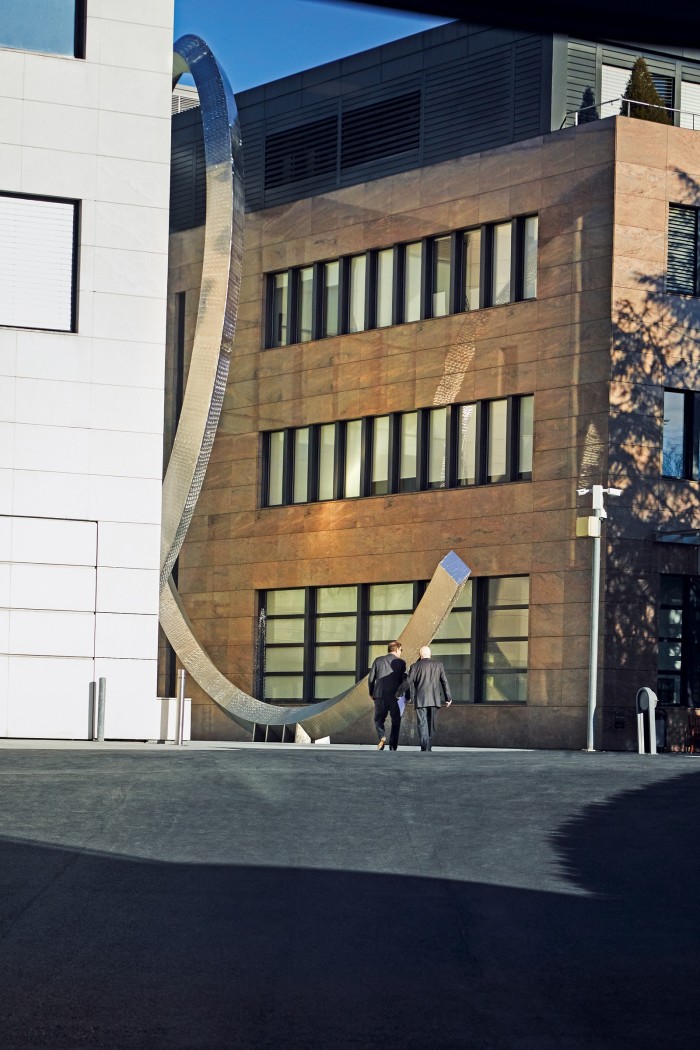
Clearly the idea is for the business to grow, but not necessarily in quantity. If it were more opportunist, it would have turned the new building over to meet demand for its desirable steel Nautilus models, for which waiting lists are currently so long that the family firm’s advertisements might be rewritten to say, “You’ll never own a Patek Philippe Nautilus. Period.”
Happily, Thierry and his father Philippe have made time to talk about the most anticipated new build in the industry. As they wear the same ties, dark suits and white shirts, the family resemblance is strong and heightened by their tendency to interrupt each other and finish each other’s sentences.
“The difficulty has always been the same,” says Thierry. “You can do one watch, but you cannot replicate it because it’s very complicated. It’s handmade. It’s about rare handcrafts. Today, we have been able to secure the process, how to replicate certain steps of the rare handcrafts. And that allows me to launch, say, some minute repeaters with an enamel dial with a design on it. Before we had to put the machines where we had space; today we put them where they are more efficient. With everything under one roof, I can reproduce them. Before it was not possible.”
“But it will always be limited,” cautions Philippe.
Thierry is quick to agree. “Definitely, because it’s not only the dial; it’s also the movement. People like that. And for the value of the watch, it’s very important…”
“…otherwise value will be down, and that’s not good,” warns Philippe.
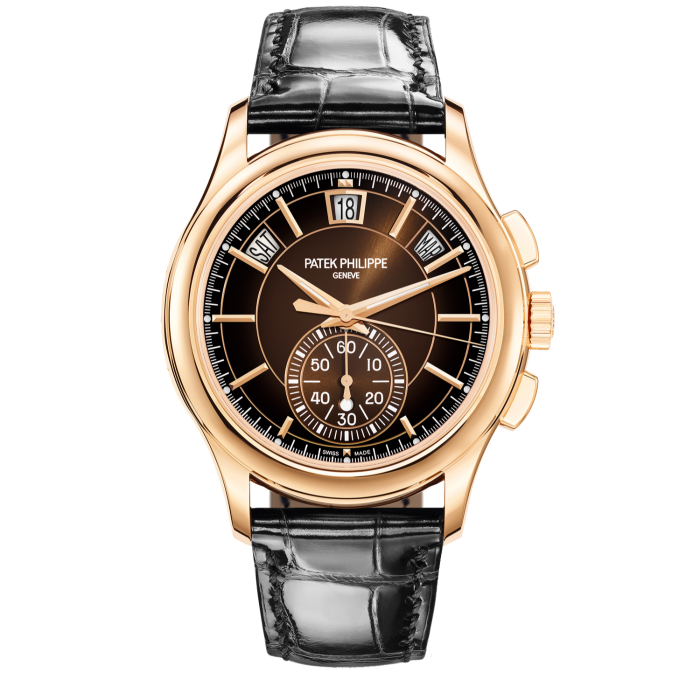
I doubt that anyone can really downplay an investment of more than half a billion Swiss francs, none of it borrowed, but Thierry gives it his best shot. “Of course, I am proud of this building; it is very big and it’s also a lovely building in terms of design, but I would say its importance lies in its efficiency. In terms of surprise I don’t think we can compare it to moving here in 1996.”
“Here” is the Geneva suburb of Plan-les‑Ouates, which is home to so many watch factories it is sometimes known as Plan-les-Watch. But almost 30 years ago, when Philippe Stern announced that he was going to build a manufacturing headquarters in the region, he caused a furore.
“Quite a few people thought I was crazy to build such a big place,” he smiles. “For that time it was a very big investment – one year’s sales budget. People thought it was much too far [from central Geneva], that nobody would come here and that we would be in big trouble, because then it was only fields and…”
“…they said we were leaving Geneva,” interjects Thierry, who adds, “We had 10 different locations around the city.”
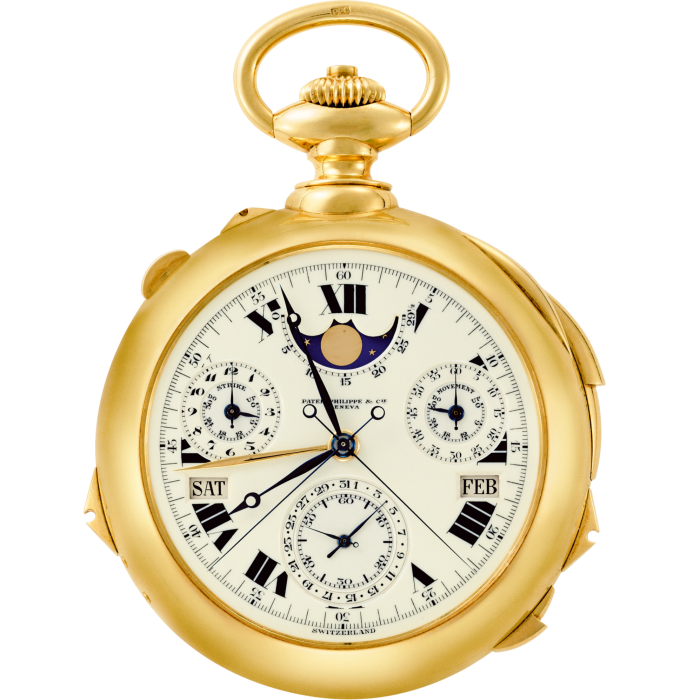
The change between the old style of working and the new was marked; I remember visiting Patek Philippe’s old HQ on the Rue du Rhône above the flagship store at the beginning of the 1990s and, if not exactly Dickensian in feel, there was a cosily historical atmosphere enhanced by the lingering aroma of the Borkum Riff pipe tobacco smoked by Henri Stern, Philippe’s father. It was from here that activities were coordinated across the town.
But having celebrated the firm’s 150th anniversary in 1989, and presciently predicting that interest in mechanical, especially complicated, watches was about to increase, Philippe Stern realised that this essentially 19th-century system of sub-suppliers and scattered workshops acquired by the company over the years needed to change. Not everyone welcomed the idea, chief among them the firm’s then patriarch, Philippe’s father, Henri.
“He came once and never again,” laughs Philippe. “It was too big for him.”
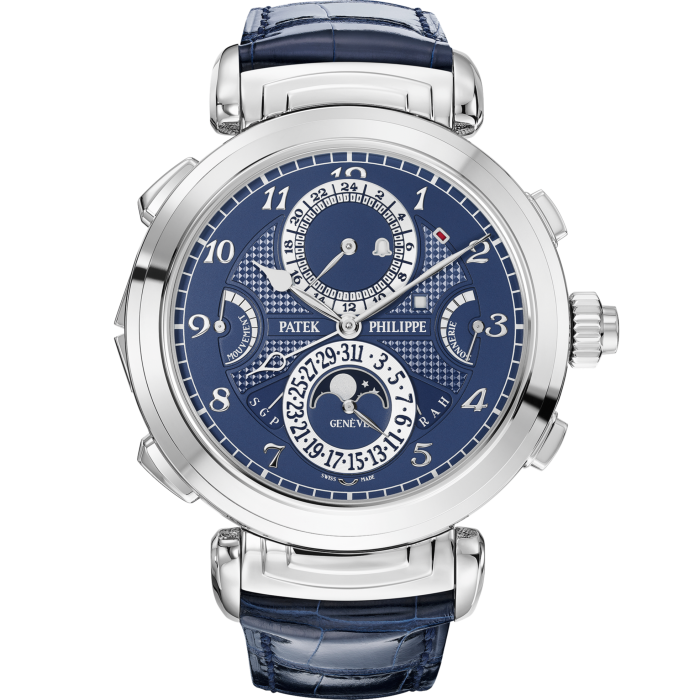
In addition to providing a place in which to expand and train new craftsmen, Thierry hopes that the building will send a message about continued family ownership. Radiating paternal pride, he is keen to show photos of his younger son learning watchmaking. Although only 16, he is already an apprentice at the factory. His older brother will attend the famous Hotel School in Lausanne, which has a reputation for business studies, before joining the firm.
While he has always said he will not force his children to work in the business, Thierry is clearly delighted that they intend to. Family ownership is a key tenet of the Patek Philippe creed on which Thierry can be quite outspoken. “With a family business you are facing professionals who know watches, who understand them and who like them,” he says. “Today, it’s very rare that I can meet somebody from a luxury group at a certain level who understands watches. They don’t. They are money makers, but they are not passionate about watches. This is really the biggest difference that I can see. They are intelligent people, all those guys, no doubt, they have been financially wise enough to buy suppliers, even to build such a building,” – he gestures around him – “but they don’t have the vision about the watches and the future of the watches. They are not creative people, they are counting on designers, but they are not willing to look in the past or even in the present to understand why they should launch this watch as opposed to that watch. I see that there is a loss of creativity.”
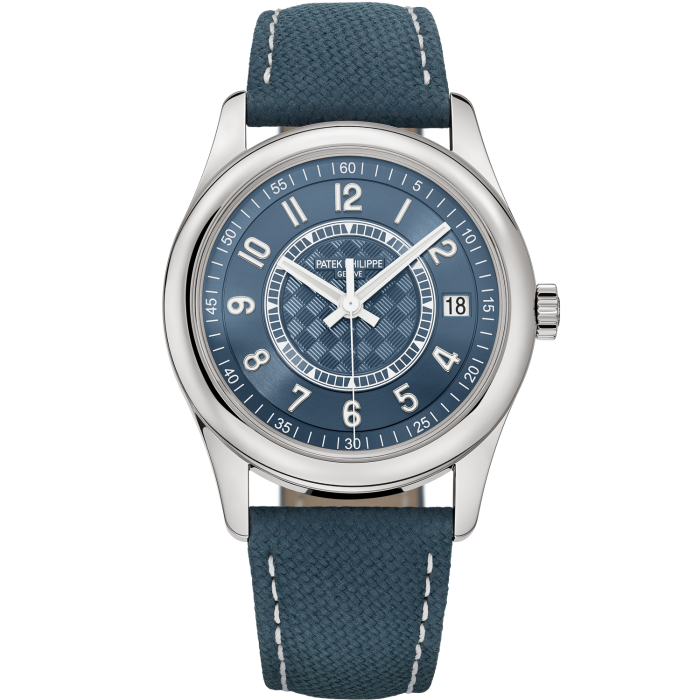
Philippe believes that a family firm is about a continuity of vision: “It really increases Patek Philippe’s credibility. People know that we know what we are talking about; we know the watches. I don’t think you find this credibility very often in the watch industry today. You have it with Patek,” he says, adding approvingly, “Rolex has a straight strategy that never changes.
“Other brands are good, they can make something good, but one day you have a CEO coming from Champagne and directing the group with a new strategy and six years later you have a new one saying, ‘No, that’s no good – we need a new strategy,’ so retailers, maybe even buyers, don’t really know what’s going on.
“I’m not involved in daily work,” adds Philippe, who is now 82, “but I’m still here once in a while for strategic decisions. And nothing has really changed…”
“…that was the main idea,” says Thierry. “You shouldn’t see the change. And I think it will be the same with my kids.”
These are sweeping observations and I am sure that owners and operators of major groups would have a different perspective, but for the Sterns it is about a clash of cultures all the more keenly felt because of the unfounded claim last year made by Bloomberg that Patek was for sale.
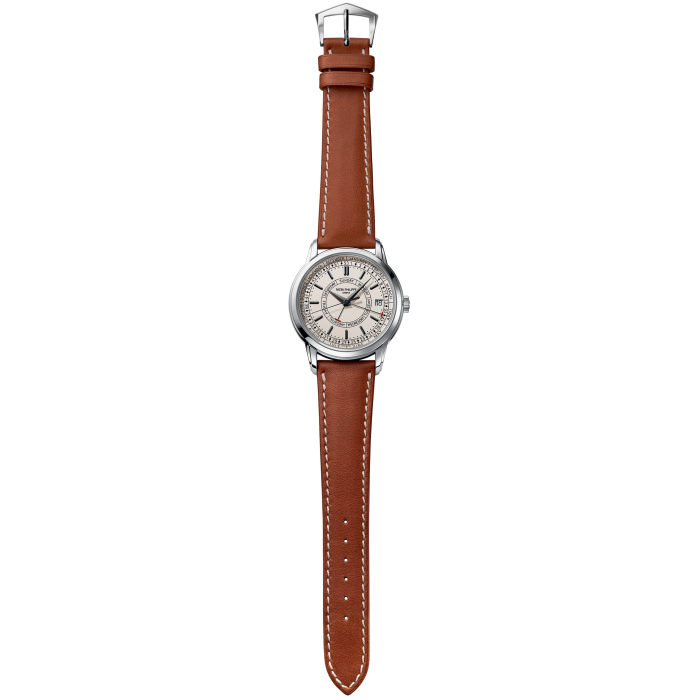
“We were really upset,” says Thierry, who was besieged by calls from prospective buyers and concerned stakeholders in equal number. “The most difficult thing is to handle the people who work for you. That’s why I was angry, because it caused a lot of fear for our people.” Then, as if sensing he has got a bit too serious, he allows himself a joke: “Maybe if they offered 50bn…”
But it is dangerous to joke about such things: Patek mania is such that someone might! After all, if people are prepared to pay over $30m for a single watch…
Comments